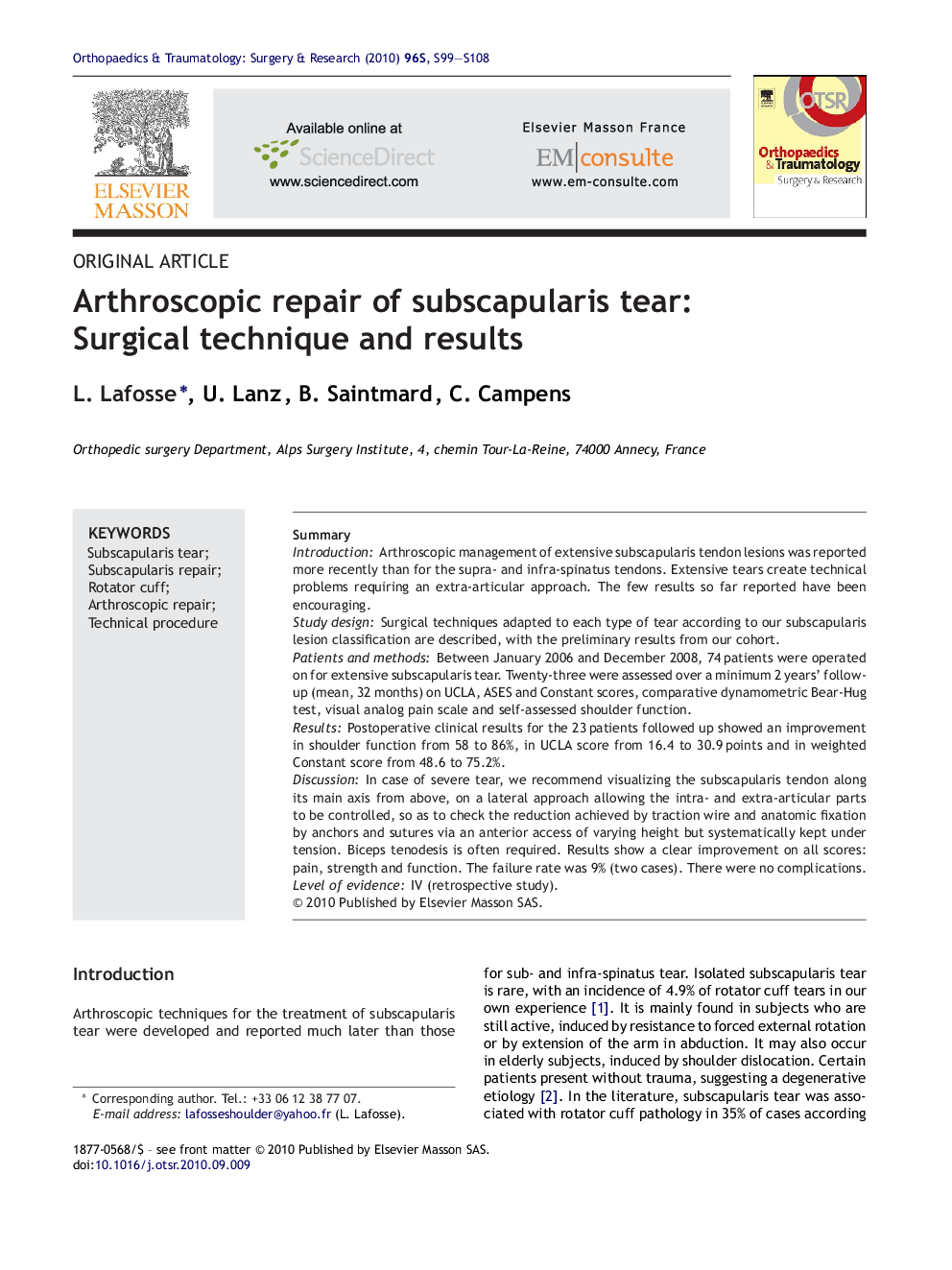| Article ID | Journal | Published Year | Pages | File Type |
|---|---|---|---|---|
| 4082297 | Orthopaedics & Traumatology: Surgery & Research | 2010 | 10 Pages |
SummaryIntroductionArthroscopic management of extensive subscapularis tendon lesions was reported more recently than for the supra- and infra-spinatus tendons. Extensive tears create technical problems requiring an extra-articular approach. The few results so far reported have been encouraging.Study designSurgical techniques adapted to each type of tear according to our subscapularis lesion classification are described, with the preliminary results from our cohort.Patients and methodsBetween January 2006 and December 2008, 74 patients were operated on for extensive subscapularis tear. Twenty-three were assessed over a minimum 2 years’ follow-up (mean, 32 months) on UCLA, ASES and Constant scores, comparative dynamometric Bear-Hug test, visual analog pain scale and self-assessed shoulder function.ResultsPostoperative clinical results for the 23 patients followed up showed an improvement in shoulder function from 58 to 86%, in UCLA score from 16.4 to 30.9 points and in weighted Constant score from 48.6 to 75.2%.DiscussionIn case of severe tear, we recommend visualizing the subscapularis tendon along its main axis from above, on a lateral approach allowing the intra- and extra-articular parts to be controlled, so as to check the reduction achieved by traction wire and anatomic fixation by anchors and sutures via an anterior access of varying height but systematically kept under tension. Biceps tenodesis is often required. Results show a clear improvement on all scores: pain, strength and function. The failure rate was 9% (two cases). There were no complications.Level of evidenceIV (retrospective study).
